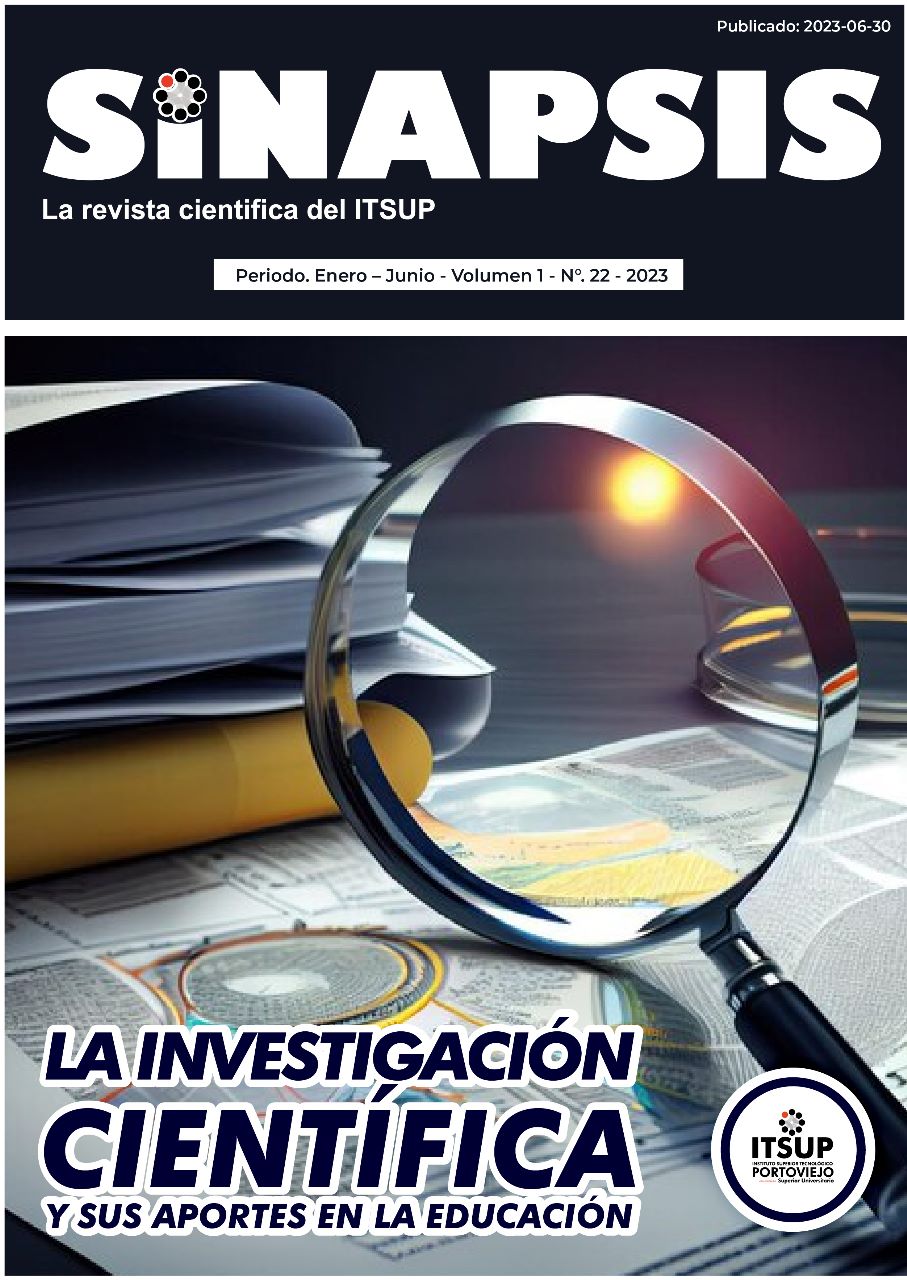The contribution of audiovisual resources to students’ speaking skills
DOI:
https://doi.org/10.37117/s.v1i22.747Keywords:
Keys words: English as a Foreign Language, technology, audiovisual resources, speaking skillsAbstract
The contribution of audiovisual resources to students’ speaking skills
Abstract
In Portoviejo, many educational institutions have the necessary audiovisual resources to be able to teach English as a Foreign Language. The objective of this research was to determine the contribution of audiovisual resources in the development of speaking skills. The study was carried out with a group of 62 students and 10 teachers from a school in Portoviejo city. The methods used in this study were quantitative and qualitative. The results obtained thanks to the application of various instruments such as questionnaires, revealed important information, such as that slides are one of the most used audiovisual resources in classrooms and that these resources help students with language acquisition word reminding and cognitive learning. It was also possible to know that the students consider that their level of oral production is good, as do the teachers. In this study, it was concluded that the use of audiovisual resources contributes positively to the development of the students’ speaking skills.
Downloads
References
Abduramanova, D. V. (2021). METHODS OF TEACHING ENGLISH AS A FOREIGN LANGUAGE. Scientific Journal Impact Factor, 1.
Akay, E. (2021, june). The Use of Audio-Visual Materials in the Education of Students with Hearing Loss . Canadian Center of Science and Education , 14(7).
Al-Jadidi, H. S. (2009, July). Teaching English as a Foreign Language in Oman: An Exploration of English Language Teaching Pedagogy in Tertiary Education . Melbourne, Australia.
Bahrani, T., & Soltani, R. (2012). How to Teach Speaking Skill? Journal of Education and Practice.
Educación, M. d. (2012). Estándares de calidad edicativa. The English Language Learning Standards. Ecuador.
Hussain, S. (2017). Teaching Speaking Skills in Communication Classroom. International Journal of Media, Journalism and Mass Communications (IJMJMC).
Jalaluddin, M. (2016). Using YouTube to Enhance Speaking Skills in ESL Classroom. English for Specific Purposes World,, 1.
Kostikova, L., Prishvina , V., Fedotova, O., Ilyushina, A., & Belogurov, A. (2018). Culture in Teaching English as a Foreign Language. Advances in Social Science, Education and Humanities Research, 16.
Kuśnierek, A. (2015). Developing students’ speaking skills through role-play. World Scientific News.
Ode, E. O. (2014). IMPACT OF AUDIO-VISUAL (AVs) RESOURCES ON TEACHING AND LEARNING IN SOME SELECTED PRIVATE SECONDARY SCHOOLS IN MAKURDI. IMPACT: International Journal of Research in Humanities, Arts and Literature.
Ojobor, R. C., Fagbemi, V. O., & Babarinde, E. T. (2020). AUDIO-VISUAL RESOURCES RESOURCES IN LIBRARY: AN ENHANCING TOOL FOR EFFECTIVE TEACHING AND LEARNING IN PRIMARY SCHOOLS IN NSUKKA. Library Philosophy and Practice (e-journal), 2.
Rao, P. S. (2019). THE IMPORTANCE OF SPEAKING SKILLS IN ENGLISH CLASSROOMS. Alford Council of International English & Literature Journal(ACIELJ), 8.
Setiyadi, B. (2020). Teaching English as a Foreing Language . Graha Ilmu.
Stakanova, E., & Tolstikhina, E. (2014). Different Approaches to Teaching English as a Foreing Language to Young Learners. Procedia Social and Behavioral Sciences.
Zyoud, M. (2016). THEORETICAL PERSPECTIVE ON HOW TO DEVELOP SPEAKING SKILL AMONG UNIVERSITY STUDENTS. Pune research scholar an international multidisciplinary journal .
Downloads
Published
How to Cite
Issue
Section
License
Copyright (c) 2023 Sara María Mera Jaramillo, Dra. Karina Luzdelia Mendoza Bravo, PhD

This work is licensed under a Creative Commons Attribution-NonCommercial-NoDerivatives 4.0 International License.
El Copyright posee el propósito de proteger tanto la propiedad intelectual de los autores como sus resultados. El comité editorial de la Revista Sinapsis se compromete con los autores a proteger, defender y preservar tanto su trabajo como su reputación, y toma muy en serio las acusaciones de infracción, plagio, disputas éticas y fraude. Si un autor se da cuenta de un posible plagio, copia de resultados, fraude o infracción, le rogamos que se comunique con la mayor brevedad posible con el comité editorial de la revista Sinapsis.
CC BY-NC-ND: esta licencia permite a los reutilizadores copiar y distribuir el material en cualquier medio o formato solo sin adaptarlo, solo con fines no comerciales y siempre que se le atribuya al creador.
Términos de Licencia:
Reconocimiento: debe otorgar el crédito correspondiente, proporcionar un enlace a la licencia e indicar si se realizaron cambios. Puede hacerlo de cualquier manera razonable, pero no de ninguna manera que sugiera que el licenciante lo respalda a usted o su uso.
No comercial: no puede utilizar el material con fines comerciales.
No Derivada: si remezcla, transforma o construye sobre el material, no puede distribuir el material modificado.
Sin restricciones adicionales: no puede aplicar términos legales o medidas tecnológicas que restrinjan legalmente a otros de hacer cualquier cosa que permita la licencia.
El autor esta en la obligación de seguir las exigencias según lo instruido en la licencia ubicada en el enlace: https://creativecommons.org/licenses/by-nc-nd/4.0/deed.es






